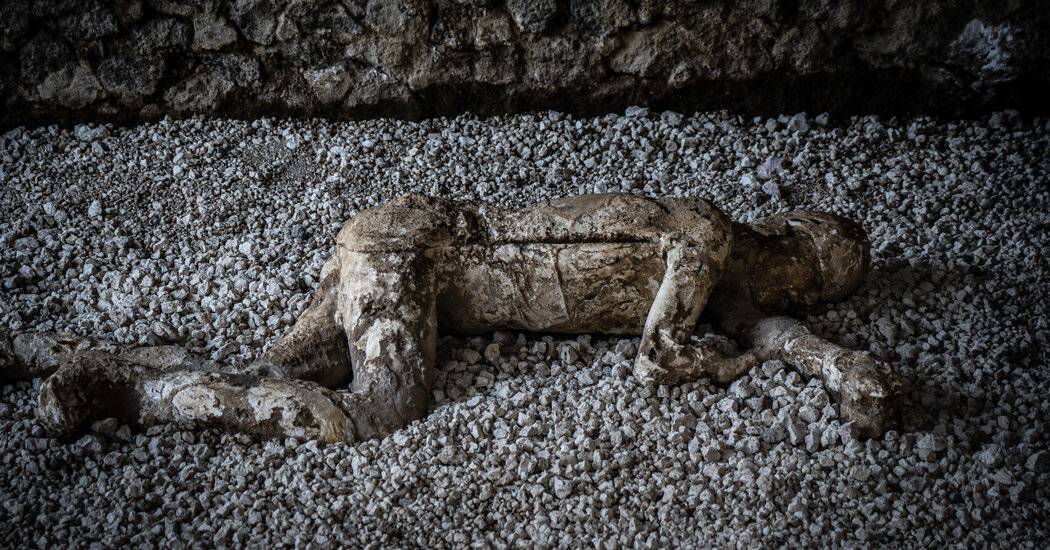In 79 A.D., a volcanic eruption engulfed a town’s residents. They weren’t all who scientists thought, newly extracted genetic material suggests.
The Italian writer Italo Calvino observed that a person’s life consists of a collection of events, the last of which could change the meaning of the whole. In A.D. 79, the final event for many of the inhabitants of Pompeii was the volcanic eruption that buried them under a 20-foot layer of ash and sediment. Dozens of the corpses retained their shapes long enough for the layers of debris to build around them, forming impressions that, with the decaying of soft tissue, became perfect hollow molds.
Starting in 1863, archaeologists filled the cavities with plaster to create replicas of the victims’ death throes. Narratives were spun around the more evocative casts: a group consisting of a child and two adults, one of whom wore wrist jewelry and whose lap held a youngster, became known as the Family of the House of the Golden Bracelet, while a pair of bodies locked in what appeared to be a poignant embrace were famously named the Two Maidens.
Now, genomic testing on skeletal remains embedded in the casts has challenged both interpretations. As reported Thursday in the journal Current Biology, the DNA evidence shows that the identities and relationships of the deceased do not match the longstanding assumptions, which had largely been based on physical appearance, the positioning of the casts and romantic notions promoted by literature and Hollywood films.
The study team, which included David Reich, a geneticist at Harvard University, and David Caramelli, an anthropologist at the University of Florence in Italy, proposed that the adult and the younger child, traditionally viewed as mother and offspring, are genetically an adult male and a boy who were biologically unrelated. Contrary to the established account, the researchers concluded that none of the four people in the grouping were kinfolk.
“We were able to quite clearly disprove what archaeologists have put forth about this grouping being a nuclear family,” said Alissa Mittnik, a geneticist at the Harvard lab that generated the data. “But of course we don’t really know, and we can’t really say, who these individuals were and how they interacted with each other.”
She added, “It could have been that these were servants or slaves, or the children might have been the children of servants or slaves who also inhabited the house.”
